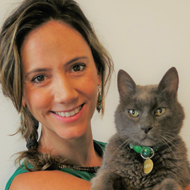
The updated guidelines will be launched at World Congress.
The World Small Animal Veterinary Association (WSAVA) will launch an updated version of the Global Pain Guidelines during its World Congress.
Currently undergoing peer-review before publication in the Journal of Small Animal Practice (JSAP), the new edition of the Guidelines for the Recognition, Assessment and Treatment of Pain have been created by the WSAVA's Global Pain Council (GPC).
Published in 2014, the first Global Guidelines have been downloaded from the JSAP website 53,000 times.
The updated guidelines will provide veterinary professionals will easy-to-implement information on the recognition and treatment of pain in small animal practice.
Accessible to veterinary professionals from any region of the world, the guidelines offer support regardless of drug availability, sharing advice on how to recognise and treat pain when drugs are unavailable.
Dr Bea Monteiro, chair of the WSAVA Global Pain Council, said: “With animal sentience now legally recognized in many countries and jurisdictions, veterinary health professionals have a moral and ethical duty to mitigate suffering to the best of our ability.
“Despite advances in the recognition and treatment of pain, pain still occurs more commonly than it is treated. This makes it essential that we engage veterinarians globally and support them in recognizing, anticipating, alleviating and treating pain.
“We hope the latest issue of our Guidelines will become a key reference point and I’d like to thank the members of the GPC for their dedication in preparing them.”
WSAVA World Congress, where the new guidelines will be launched, is taking place in Lima, Peru, from 29 – 31 October.
Image (C) WSAVA



 BSAVA is to partner with BVA Live (11-12 June 2026) to champion clinical research.
BSAVA is to partner with BVA Live (11-12 June 2026) to champion clinical research.